Alfa Romeo Giulia vs Renault Trafic Bus – Differences & prices compared
Everyday use, family trips or long-distance drives – here’s where the differences show.
Discover whether Alfa Romeo Giulia or Renault Trafic Bus fits your lifestyle better.
Costs and Efficiency:
Price and efficiency are often the first things buyers look at. Here it becomes clear which model has the long-term edge – whether at the pump, the plug, or in purchase price.
Renault Trafic Bus has a distinct advantage in terms of price – it starts at 38200 £, while the Alfa Romeo Giulia costs 48000 £. That’s a price difference of around 9761 £.
Fuel consumption also shows a difference: Alfa Romeo Giulia manages with 5.40 L and is therefore noticeable more efficient than the Renault Trafic Bus with 6.70 L. The difference is about 1.30 L per 100 km.
Engine and Performance:
Under the bonnet, it becomes clear which model is tuned for sportiness and which one takes the lead when you hit the accelerator.
When it comes to engine power, the Alfa Romeo Giulia has a a bit edge – offering 210 HP compared to 170 HP. That’s roughly 40 HP more horsepower.
In acceleration from 0 to 100 km/h, the Alfa Romeo Giulia is convincingly quicker – completing the sprint in 6.80 s, while the Renault Trafic Bus takes 10.60 s. That’s about 3.80 s faster.
In terms of top speed, the Alfa Romeo Giulia performs evident better – reaching 235 km/h, while the Renault Trafic Bus tops out at 180 km/h. The difference is around 55 km/h.
There’s also a difference in torque: Alfa Romeo Giulia pulls to a small extent stronger with 470 Nm compared to 380 Nm. That’s about 90 Nm difference.
Space and Everyday Use:
Beyond pure performance, interior space and usability matter most in daily life. This is where you see which car is more practical and versatile.
Seats: Renault Trafic Bus offers clearly more seating capacity – 9 vs 5.
In curb weight, Alfa Romeo Giulia is noticeable lighter – 1640 kg compared to 2031 kg. The difference is around 391 kg.
When it comes to payload, Renault Trafic Bus significantly takes the win – 982 kg compared to 535 kg. That’s a difference of about 447 kg.
Who comes out on top?
Overall, the Alfa Romeo Giulia shows itself to be is largely superior and secures the title of DriveDuel Champion.
It convinces with the more balanced overall package and proves to be the more versatile choice for everyday use.
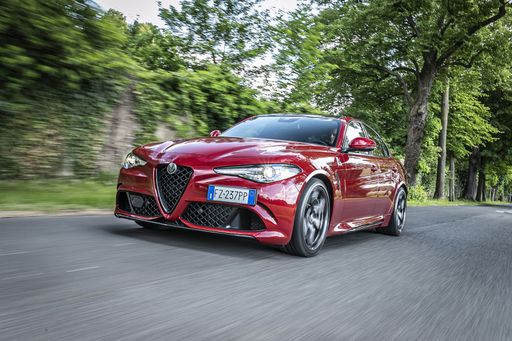 @ Alfa Romeo / Stellantis Media
@ Alfa Romeo / Stellantis Media
Alfa Romeo Giulia
Alfa Romeo Giulia
The Alfa Romeo Giulia captivates with its stunning Italian design and dynamic performance, representing a perfect blend of elegance and sportiness. Its engaging driving experience, characterised by precise handling and responsive steering, appeals to enthusiasts who crave the thrill of the road. Inside, the Giulia showcases a beautifully crafted interior that combines luxury with cutting-edge technology, making every journey a delight.
details @ Alfa Romeo / Stellantis Media
@ Alfa Romeo / Stellantis Media
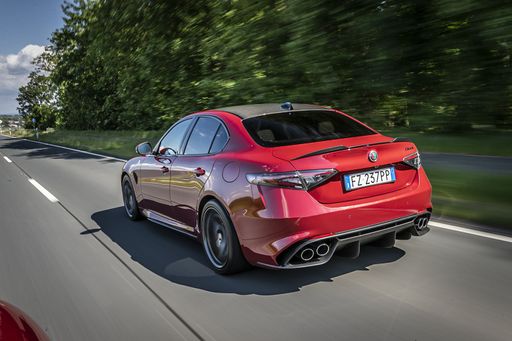 @ Alfa Romeo / Stellantis Media
@ Alfa Romeo / Stellantis Media
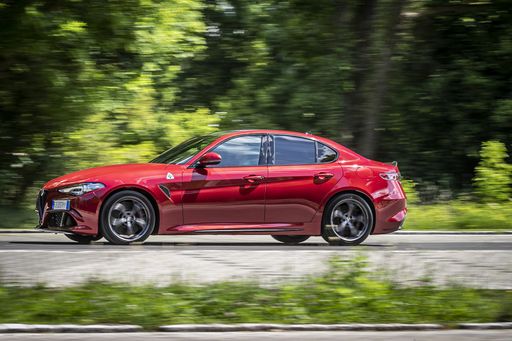 @ Alfa Romeo / Stellantis Media
@ Alfa Romeo / Stellantis Media
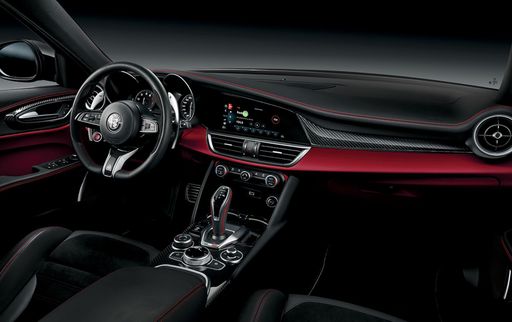 @ Alfa Romeo / Stellantis Media
@ Alfa Romeo / Stellantis Media
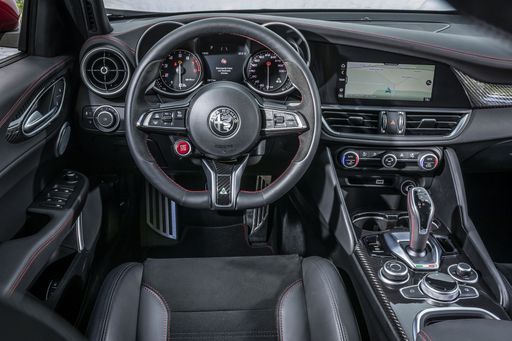 @ Alfa Romeo / Stellantis Media
@ Alfa Romeo / Stellantis Media
Renault Trafic Bus
The Renault Trafic Bus is a versatile and spacious option for those needing to transport multiple passengers comfortably. With its modern design and practical features, it is well-suited for both business and leisure purposes. Its efficient engine and smooth handling make it a reliable choice for long journeys.
details
 @ Alfa Romeo / Stellantis Media
@ Alfa Romeo / Stellantis Media
|
|
|
|
|
Costs and Consumption |
|
|---|---|
|
Price
48000 - 57000 £
|
Price
38200 - 54400 £
|
|
Consumption L/100km
5.40 L
|
Consumption L/100km
6.7 - 7.2 L
|
|
Consumption kWh/100km
-
|
Consumption kWh/100km
-
|
|
Electric Range
-
|
Electric Range
-
|
|
Battery Capacity
-
|
Battery Capacity
-
|
|
co2
141 g/km
|
co2
175 - 189 g/km
|
|
Fuel tank capacity
58 L
|
Fuel tank capacity
80 L
|
Dimensions and Body |
|
|---|---|
|
Body Type
Sedan
|
Body Type
Bus
|
|
Seats
5
|
Seats
8 - 9
|
|
Doors
4
|
Doors
4
|
|
Curb weight
1640 kg
|
Curb weight
2031 - 2352 kg
|
|
Trunk capacity
480 L
|
Trunk capacity
-
|
|
Length
4650 mm
|
Length
5080 - 5480 mm
|
|
Width
1860 mm
|
Width
1956 mm
|
|
Height
1438 mm
|
Height
1973 - 1974 mm
|
|
Max trunk capacity
-
|
Max trunk capacity
3200 - 4000 L
|
|
Payload
535 kg
|
Payload
718 - 982 kg
|
Engine and Performance |
|
|---|---|
|
Engine Type
Diesel
|
Engine Type
Diesel
|
|
Transmission
Automatic
|
Transmission
Manuel, Automatic
|
|
Transmission Detail
Automatic Gearbox
|
Transmission Detail
Manual Gearbox, Automatic Gearbox
|
|
Drive Type
All-Wheel Drive
|
Drive Type
Front-Wheel Drive
|
|
Power HP
210 HP
|
Power HP
110 - 170 HP
|
|
Acceleration 0-100km/h
6.80 s
|
Acceleration 0-100km/h
10.6 - 16.5 s
|
|
Max Speed
235 km/h
|
Max Speed
161 - 180 km/h
|
|
Torque
470 Nm
|
Torque
300 - 380 Nm
|
|
Number of Cylinders
4
|
Number of Cylinders
4
|
|
Power kW
154 kW
|
Power kW
81 - 125 kW
|
|
Engine capacity
2143 cm3
|
Engine capacity
1997 cm3
|
General |
|
|---|---|
|
Model Year
2024 - 2025
|
Model Year
2023 - 2025
|
|
CO2 Efficiency Class
E
|
CO2 Efficiency Class
G, F
|
|
Brand
Alfa Romeo
|
Brand
Renault
|
Is the Alfa Romeo Giulia offered with different drivetrains?
Available configurations include All-Wheel Drive.
The prices and data displayed are estimates based on German list prices and may vary by country. This information is not legally binding.
